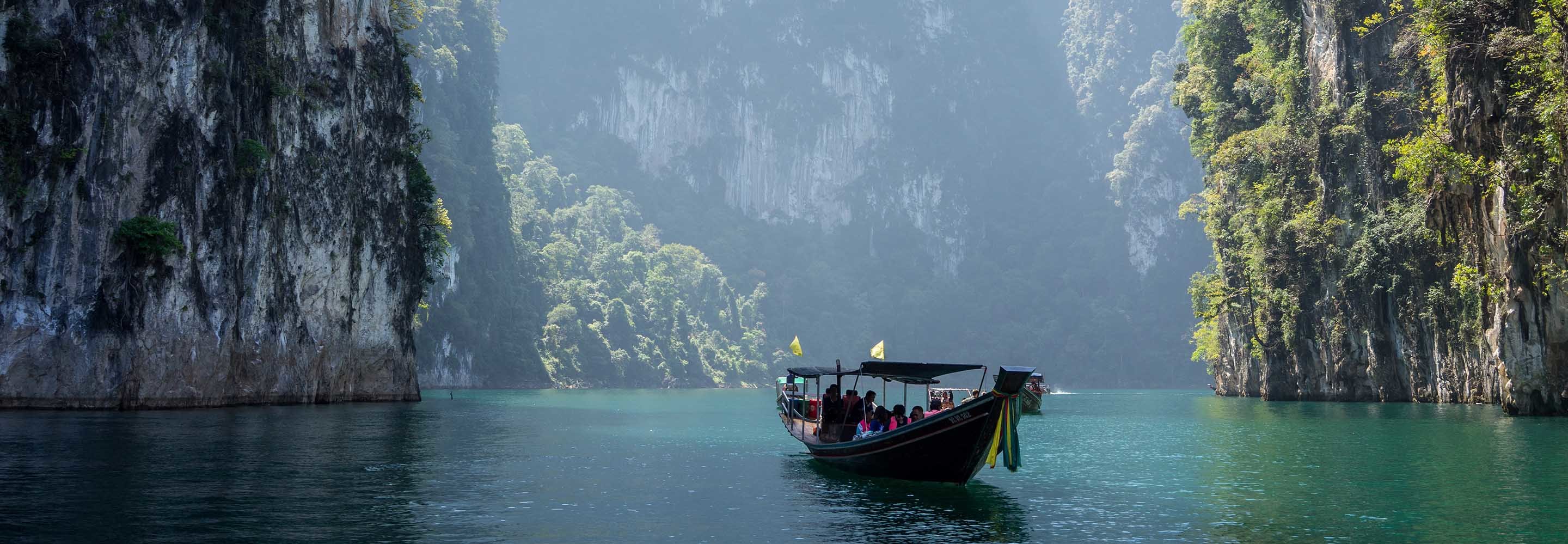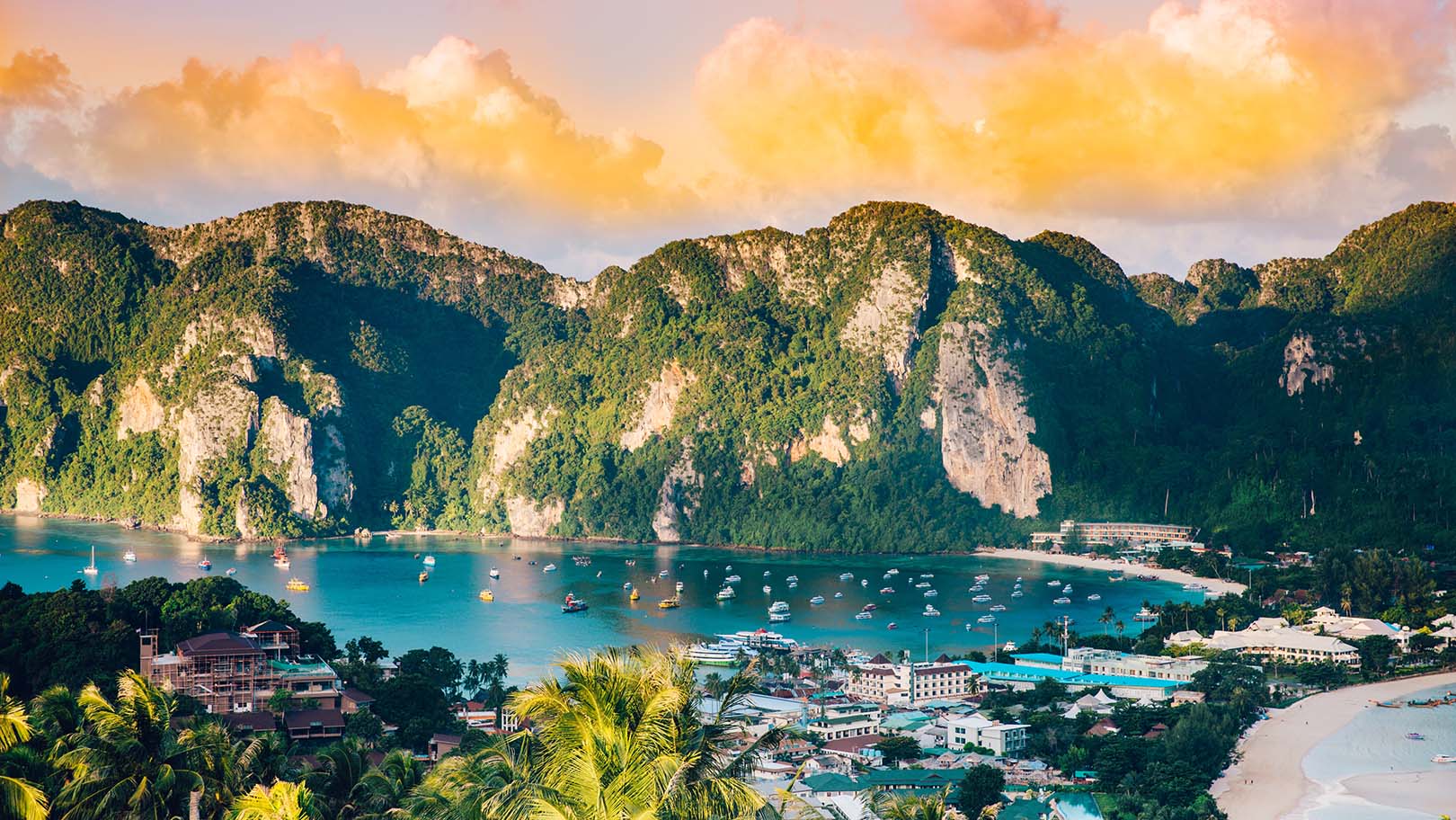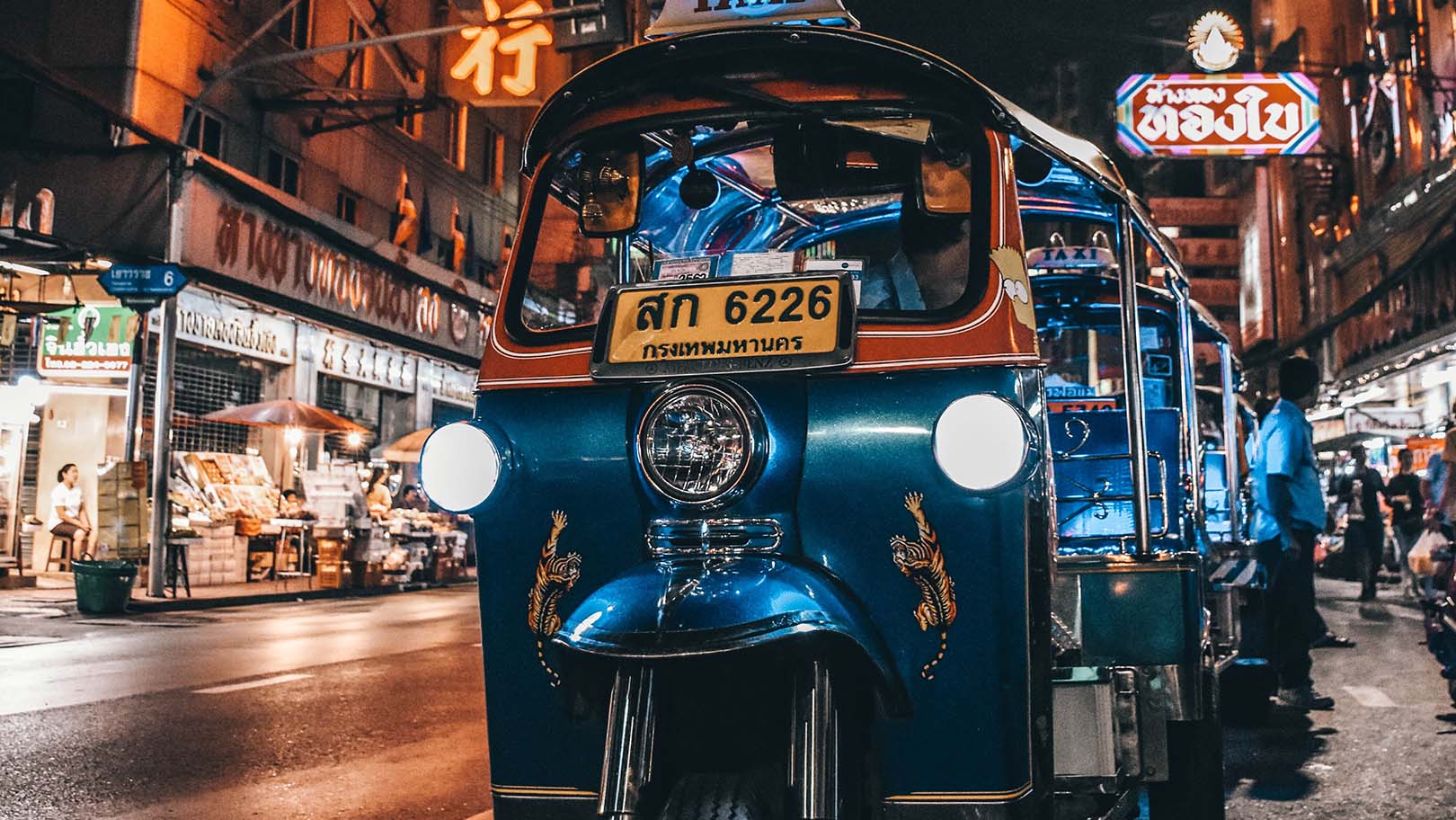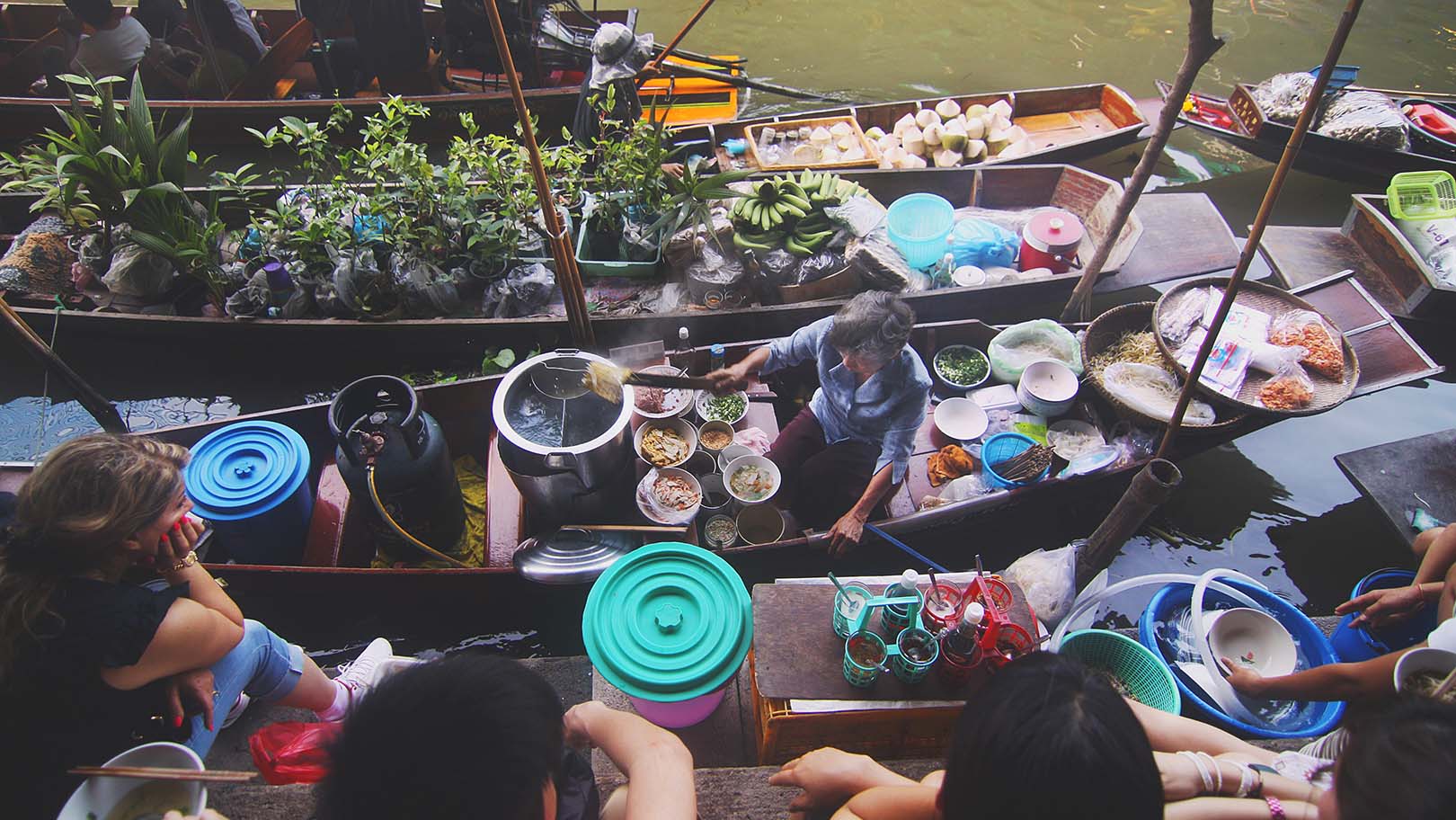Thailand travel tips: Everything you need to know
By Stevie Keen

If you’re travelling to Thailand or Laos, prepare for the trip of a lifetime. From stunning temples and mouth-watering street food to nightly beach parties and scuba diving, Thailand has something for everyone.
But it can be overwhelming, so we’ve collected all the information you need to prepare yourself for making the most of this vast and varied Southeast Asian destination.
Thailand travel tips and advice
- Slow down
Thailand has a lot to offer and it’s tempting to do every activity you can during your trip, but if you’re rushing from one thing to another you won’t really make the most of any of the experiences. - Take cash
Day-to-day transactions in Thailand are still very cash-based. High-end hotels, restaurants and shopping centres will often take card, but street food and local markets will lure you in and you don’t want to miss out. - Watch out for scams
With everything that Thailand has to offer, you really don’t want to waste any time trying to replace missing bank cards or cash, so make sure you read up on the common scams before you go. If you know what to be on the lookout for, you’re less likely to encounter any hiccups in your travel plans. - Think twice about renting a scooter
Yeah, they look fun and everyone’s scooting about on them, but scooter accidents aren’t uncommon thanks to Thailand’s poor road safety records and travel insurance often won’t cover you if you don’t have a motorbike licence from your home country (and even then, you still might not be insured).
Thailand and Laos weather
The best time to visit Thailand is between November and February when the weather is still warm but the northeast monsoon brings in cool, dry air, taking the edge off of the intense heat Thailand often gets. Bangkok swings between about 18 and 32 degrees Celsius – or 64 to 90 degrees Farenheit – during this time, while further north it will feel a bit more like Spring temperatures. April is when the heat really hits and it’s uncomfortable to do anything but swim really.
The rainy season in Thailand varies between regions, but is roughly from May or June until October, with the real downpours taking place around August to October.

The best time to visit Laos is between October and April when the warm dry weather will mean you can really make the most of this small, landlocked country. Laos weather is particularly excellent in December, where you’ll see blue skies aplenty and little rain, with temperatures up to about 22 degrees Celsius. Rainy season in Laos is from about May, through to October, so avoid those months if you want to stay away from the downpours.
If you’re set on a spot of river travelling, book your trip for sometime between November and January. The high water levels will allow better passageway along the Mekong River.
Thailand and Laos currency
If you’re travelling to Thailand, pick up some Thai Baht and remember, they’re a mostly cash-based country so don’t rely on debit cards for day-to-day transactions.
The currency in Laos is the Laos Kip.
Do they speak English in Thailand?
In some areas, yes. English is more common in more touristy areas, such as the Thai islands, and when it comes to activities and hotels you should find plenty of people who can help you out. In Northern Thailand and more rural areas, there will be fewer people who speak English, but politeness and attempts to communicate will still go a long way.
The best activities to do in Thailand
If staying busy is important to you and you want to pack your itinerary with the best of what Thailand has to offer, you’ll need to plan your trip well. We think these are the best things to do in Thailand, so get adding them to your list now.
- Wat Phra Kaew or the Temple of the Emerald Buddha
One of the most important Buddhist temples in Thailand, Wat Phra Kaew – also known as the Temple of the Emerald Buddha – is located within the grounds of the Grand Palace in Bangkok. The temple enshrines Phra Kaew Morakot, with the highly revered Buddha image in a meditating position carved from a single block of jade. It dates back as far as the 15th century. - The Bridge on the River Kwai
During WWII, Japan constructed a railway line from Ban Pong in Thailand to Thanbyuzayat in Burma using prisoners of war and Asian slave labour. The line was built in anticipation of an attack on India and was designed to haul cargo. Thousands lost their lives building the line and many are buried in the nearby War Cemetery. Tours are available, but the best ones include a trip to the Thailand-Burma Railway Museum, a visit to the War Cemetery and a stop at the bridge itself.

- Take a tour around Bangkok at night by Tuk Tuk
Bangkok’s iconic sites are just as, if not more, stunning at night as they are during the day. The tour includes dinner and dessert along the 4-hour-long loop, which also takes in markets and temples, which are beautifully illuminated allowing you to see the capital in a whole new light. - Sukhothai Historical Park
One of Thailand’s most impressive World Heritage sites, the Sukhothai Historical Park includes the remains of 21 historical sites and four large ponds within its walls and another 70 sites within a 5km radius. Sukhothai means ‘dawn of happiness’ and was the capital of the Sukhothai Kingdom in the 13th and 14th centuries. You can explore the ruins of grand temples, including Wat Mahathat, that stood proud in this former capital city. - John Gray’s Hong by Starlight with Sea Cave Kayaking
Take a trip to Phang Nga Bay to explore its limestone caves and hidden cliff-lined lagoons by kayak with an experienced guide. This is one for the wildlife lovers, allowing you to take in the natural lagoons and caves discovered by John Gray in 1989. The trip finishes after dark with a stunning natural light show as you float your own ‘Kratong’ on the water.
How much will a trip to Thailand cost?
Thailand isn’t necessarily expensive to visit, costing around 825–1150 BHT ($25–35 USD) a day if you’re backpacking, but if you choose to take in all the activities you can find and stay in fancier hotels, you will find your funds depleting much quicker. If you are looking to go a bit more upmarket, look at a budget of around 3,300–5,000 baht ($100–150 USD) per day.
The islands tend to be a bit more expensive so if you’re basing your travel there, add a bit more to your budget, whereas you can get a bit more for your money in Northern regions.
What is the cheapest month to travel to Thailand?
The cheapest month for flights to Thailand is usually September. Flights are usually the most expensive during March, April and May.
Travelling during Thailand’s more touristy seasons will cost a bit more as hotels and other businesses don’t need to compete as much for your business. If you’re looking for bargains, travel from around June to October. The weather is wetter, so don’t go if you’re bothered by afternoon thunderstorms, but it’s low season so there will be more chance of some discounts.
Thailand food and drink
Whether you’re looking to try an authentic Pad Thai, or you’re completely new to Thai food, street food can be a great way of trying out some of the best of Thai cuisine. Stick to stalls and shops that are permanently packed if you want to play it safe.

If you’re really concerned about food standards though, look for restaurants and shops with a “Clean Food Good Taste” sign for independent verification.
Is it safe to travel in Thailand?
Generally, yes, but still be aware of scams. Look them up beforehand so you know what to look out for and make sure you have insurance, just in case the worst happens.
And while you’re there to have the time of your life, be a bit cautious with alcohol. The Thai islands have gained some notoriety for alcohol-related incidents.
Thailand passport and visa information
If you have a British passport and are arriving by air or land, you can visit Thailand for 30 days without a visa. If you want to stay longer you can extend your stay once for up to 30 days, but make sure you apply before your visa exemption period ends. If you plan to work or use land borders regularly (more than twice in a year) you need to get the appropriate visa before you go.
Laos passport and visa information
Most visitors to Laos will need a visa. If you’re travelling in to Laos from a bordering country, you can usually purchase a visa at the border, but make sure you have all the relevant documentation with you. You can also apply for a visa online at the Lao Official Online Visa website or from the Lao embassy in your home country.
Thailand and Laos vaccinations
For standard tourist visits, recommended vaccinations for Thailand are Tetanus and Diphtheria, Measles, Mumps and Rubella as well as cover against the foodborne diseases of Typhoid and Hepatitis A. If you’re looking to hike or stay a bit longer, look at getting vaccinated against Hepatitis B and Rabies too.
For Laos, the World Health Organization recommends vaccinations against Hepatitis A, Hepatitis B, Typhoid, Cholera, Yellow Fever, Japanese Encephalitis, Rabies, Meningitis, Polio, Measles, Mumps and Rubella (MMR), Tdap (tetanus, diphtheria and pertussis), Chickenpox, Shingles, Pneumonia and Influenza.



